TABLE OF CONTENTS
Video Editing or cutting Film used to be a job for specialists, that required the operation of heavy machinery. This would be a job that you would have to train on for a long time, working side-by-side with a team of assistants.
Today, everyone can be a Video Editor. After Moving Pictures went digital, it didn’t take long until the technology improved enough to make it possible for anyone to sit down in front of a Computer and edit their own Videos.
As Laptops became stronger and cheaper, Video Editing was brought to the masses, with many Software companies such as Adobe, Sony, Avid, Apple & Microsoft competing for customers with their specialized Video Editing solutions.
One of the most popular Video Editing Software today is Adobe’s Premiere Pro, which is being used by beginners and experts alike.
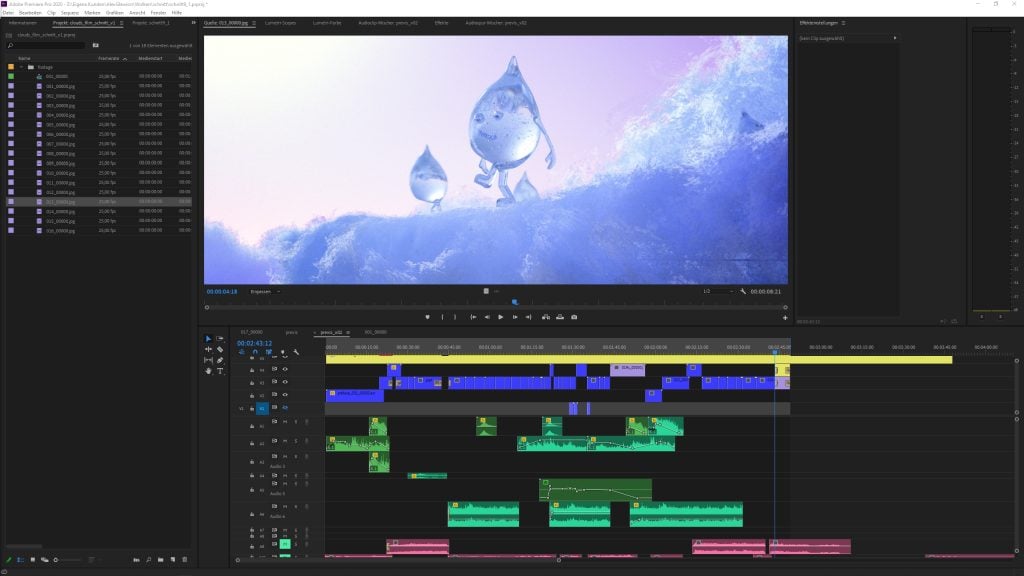
A Project opened in the popular Video Editing Tool: Premiere Pro
Adobe’s Premiere Pro, as well as, Apple’s Final Cut or Sony’s Vegas or even Microsofts Movie Maker, fortunately, all work in very similar ways, which makes it easier for us to recommend Laptops that will work well with Editing Video in any kind of Software you choose.
Because of the high price of analog film, Editing Video used to be reserved for big Studio productions like Hollywood Movies and TV Shows that could handle the cost.
Nowadays, Video Editing has become accessible to almost everyone and the need is higher than ever before:
With Video Platforms such as YouTube or Vimeo being as popular as they are, there is a multitude of users who upload their own Videos that were edited on their own Computers or Laptops.
Laptop vs Desktop for Video Editing
Laptops can be quite powerful, but they will always be outperformed (performance-wise) by desktop Computers & Workstations.
The reason, of course, is size.
A desktop Computer has more room, so the Hardware Components can use more power and be cooled more easily.
So, if you ever find yourself wondering if there is something that can accelerate your work even more than editing on a Laptop, it’s editing on a high-end Video Editing PC.
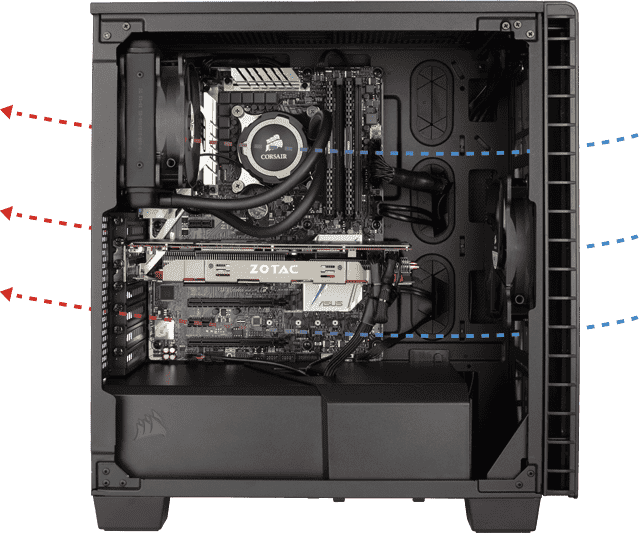
Image-Source: Corsair
But, of course, not everyone needs a high-end PC, has room for one, or wants to work at the same place all the time. Some might need a few of the many benefits that come with a mobile device.
Let’s take a look at some of the key features that make or break a good Laptop for Video Editing:
Mobility
Mobility is the first thing that comes to mind when opting for a Laptop vs. a Desktop PC.
A Laptop is much smaller, weighs less, has an in-built screen, keyboard, and touch-pad, and even brings its own power supply in terms of a battery, that lets you work away from a power outlet for some time.
This sounds great, but let’s make sure we don’t sacrifice anything by being too mobile:
Laptop Size
As we discussed earlier, Video Editing performance can usually be increased by using a larger Device (because of power, cooling, and space) so it would seem to be safe to say, that bigger Laptops perform better than small Laptops.
In part this is true.
Bigger Laptops have more room for larger batteries, that are then able to deliver more power longer, or more performance during that same time period.
Bigger Laptops sport a larger screen too, which can make them easier to work with. In addition, the Keyboard can have more Keys such as a Numbers-Pad in 17” Laptops compared to 14” or 15” Laptops, which can speed up your workflow in some Video Editing Apps.
But there are caveats:
Sometimes big Laptops are just manufactured badly, and little thought went into the cooling layout or parts arrangement by the manufacturer. This is often why a larger Laptop can be offered cheaper.
Usually, the smaller a Laptop becomes – while still keeping good performance -, the more research and planning has to be put into the manufacturing of the Laptop by the Laptop Company.
This inflates the price, which only makes it worthwhile for the Company to invest these extra resources into Laptops that will have high-end parts built-in, that can then be sold for a higher price and margins.
This article is a treasure trove in terms of figuring out Cooling Pads for Laptops if you’d like to learn more.

Cooling, Heatpipes, and Radiators for cooling the components of a Laptop – Image-Source: Gigabyte
There is little reason to invest lots of money into a product that will then be sold for very little money, unless it will be sold often, or the margins are high.
Long story short:
Bigger Laptops, like 17”, can usually be cooled better and the battery is bigger, which allows Laptops to house stronger components, also with added benefits of Screen and Keyboard.
But Performance should be the real metric to make a decision on. More on that later.
For Video Editing on a Laptop, I recommend going with either a 15.6” or a 17” Laptop.
Especially the 15.6” Laptops represent a sweet spot, that combine a large enough Screen while still being portable enough and having room for higher-end components that can be cooled well enough, so they don’t have to be throttled too often.
Choose 17”, if you rarely carry your Laptop with you and need more performance than a 15.6” Laptop can offer – or just need the added screen real-estate.
Weight
As Laptop Manufacturers usually make good use of the available space in a Laptop chassis, the larger the Laptop, the more it usually weighs.
Battery and Cooling make up most of the weight in a Laptop and they go hand in hand.
A larger battery can offer more wattage, which means more performance for the in-built components, which means more required cooling.
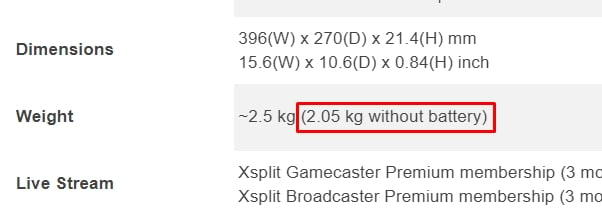
Another thing to note is that larger and high-performance Laptops can come with an external PSU that is a lot heavier than with smaller Laptops.
This means you have the heavy external PSU on the charging cable in addition to the Laptop to carry around when you move your workplace.
What many people do is buy additional charging cables and Power Supply Units (PSUs) to have at their different workplaces, so they don’t have to be carried around every time you move your Laptop.
The same, of course, can be applied to Monitors and Input Devices:
You might want a lower-end, smaller, and lightweight Laptop to carry around but have additional Monitors, Keyboard, and Mouse available at the places you usually work at.
That way you carry your Data with you but utilize additional Devices that are stationary.
For working on a commute or in remote places, of course, this is not a solution.
How do Performance and Size relate to each other in a Laptop?
As mentioned above, a Desktop PC (Workstation) has the highest performance potential to edit Videos.
This is all because of size.
The more Performance a hardware component is required to deliver, the more power it draws, meaning it has to be cooled more. Making both the PSU (or battery) and the Cooling larger.
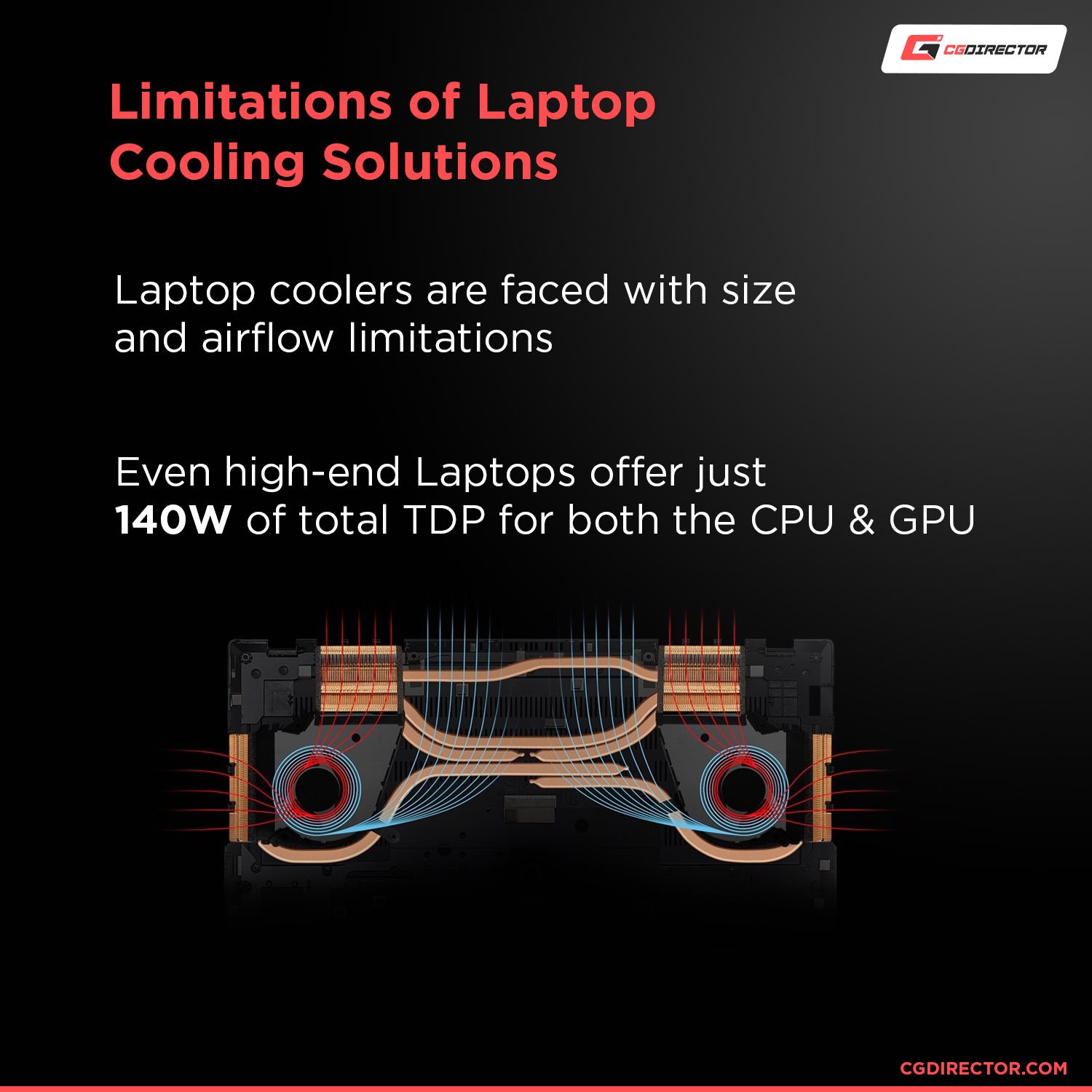
The type of cooling I am talking about here is using a block of heat-conducting metal (a radiator) that spreads the heat of a component (e.g. CPU) over a larger area to transfer it to its environment, mostly air.
This passive cooling can be improved by using a fan (active cooling), which pushes air over and through this radiator, transporting the hot air away from it, making room for cold air to be heated again, and so on.
This combination means superior cooling than passive cooling alone, with the added problem though, that the Fan can make a lot of noise. So we might be able to reduce the Cooler size a bit, but trade size for noise.
The initial problem remains, if we want more performance, we either have to be satisfied with getting a larger Laptop and/or a louder Laptop OR be ok with having our hardware throttle at times.
Battery
Because Video Editing is a workload that demands a lot of performance from the Laptop, your Battery will drain much faster than when browsing or text-editing.
Most Laptop Manufacturers state the Laptop’s Battery Life on the Product Sheet (which often is around 8 – 15 hours) but beware that this is often measured while only doing low-performance tasks such as browsing and text-editing.
You can easily divide that by 3 or more, to get the time you can do active Video Editing.
No Laptop will grant you more than 3 or 4 hours of intensive Video Editing on the in-built battery alone.
Multimedia Features, Screen & Audio
When editing videos, chances are high, that you will be doing some color-correction and grading on your footage too.
This can only be done to a high standard when your Laptop screen displays the Colors correctly, evenly, and has a sufficiently high resolution.
IPS Panel
There are two main types of so-called “display panels” that Laptops usually house.
The TN (Twisted Nematic) panel and the IPS (In-Plane-Switching) Panel.
Although TN panels have a lower response time for changing pixel values, this is only important in tasks such as high-end gaming.
For Video editing, the IPS panel is the way to go, as this panel type has a much better color display quality, coverage, and contrast ratio. They do come at a slightly higher price than TN-Panels, but are worth the extra money for visually demanding tasks.
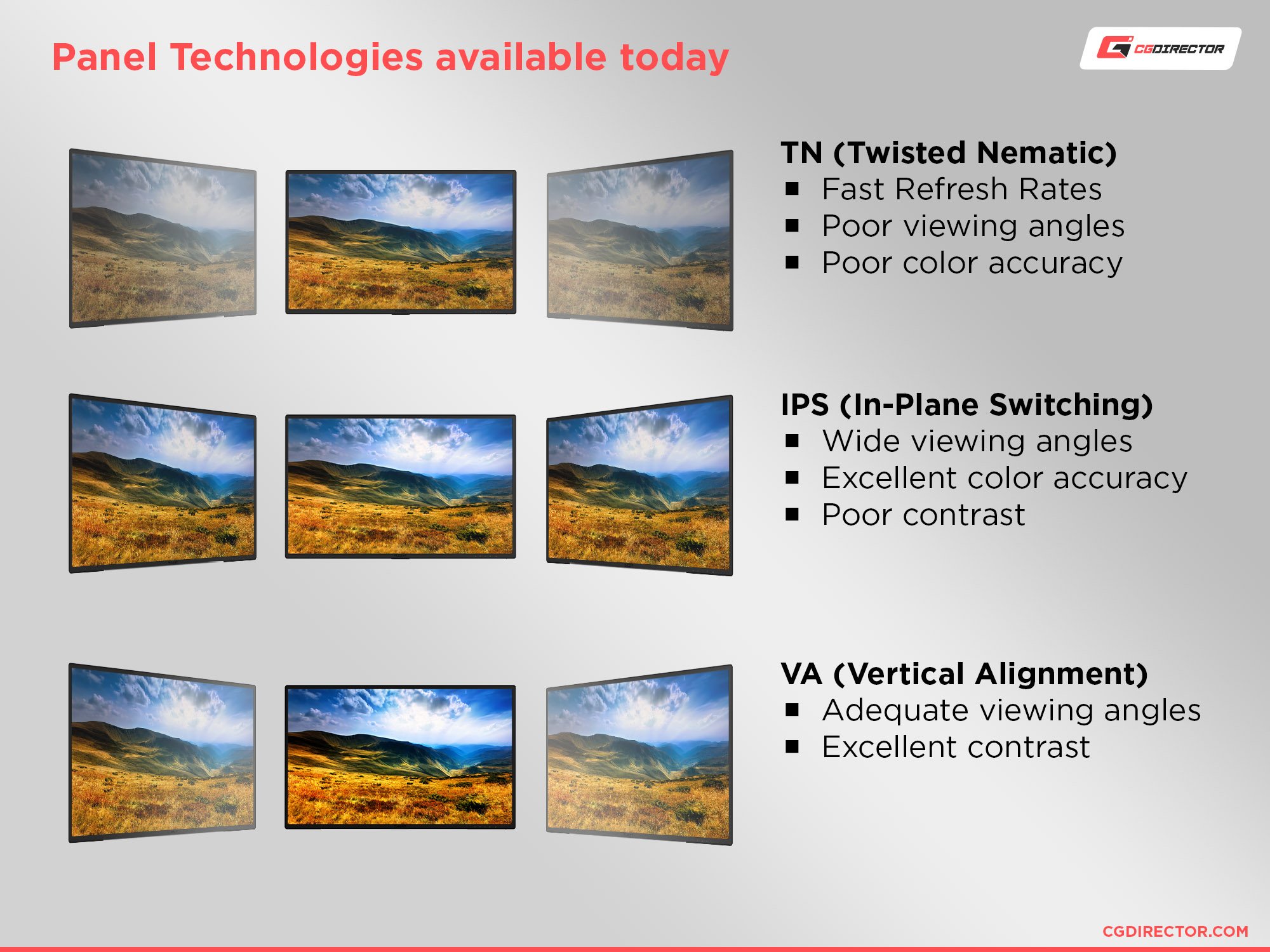
Our Monitor Guide has a lot more insight into what you should look out for in a Monitor for visually demanding tasks.
Resolution
There are two main Types of Display Resolutions for Laptops that you should be considering: 1920 x 1080 px (2K / FullHD) and 3840 x 2160 px (4K or UHD).
When using a Laptop, because you are usually editing on a single Monitor, you will have to get as much content on that single screen as possible.
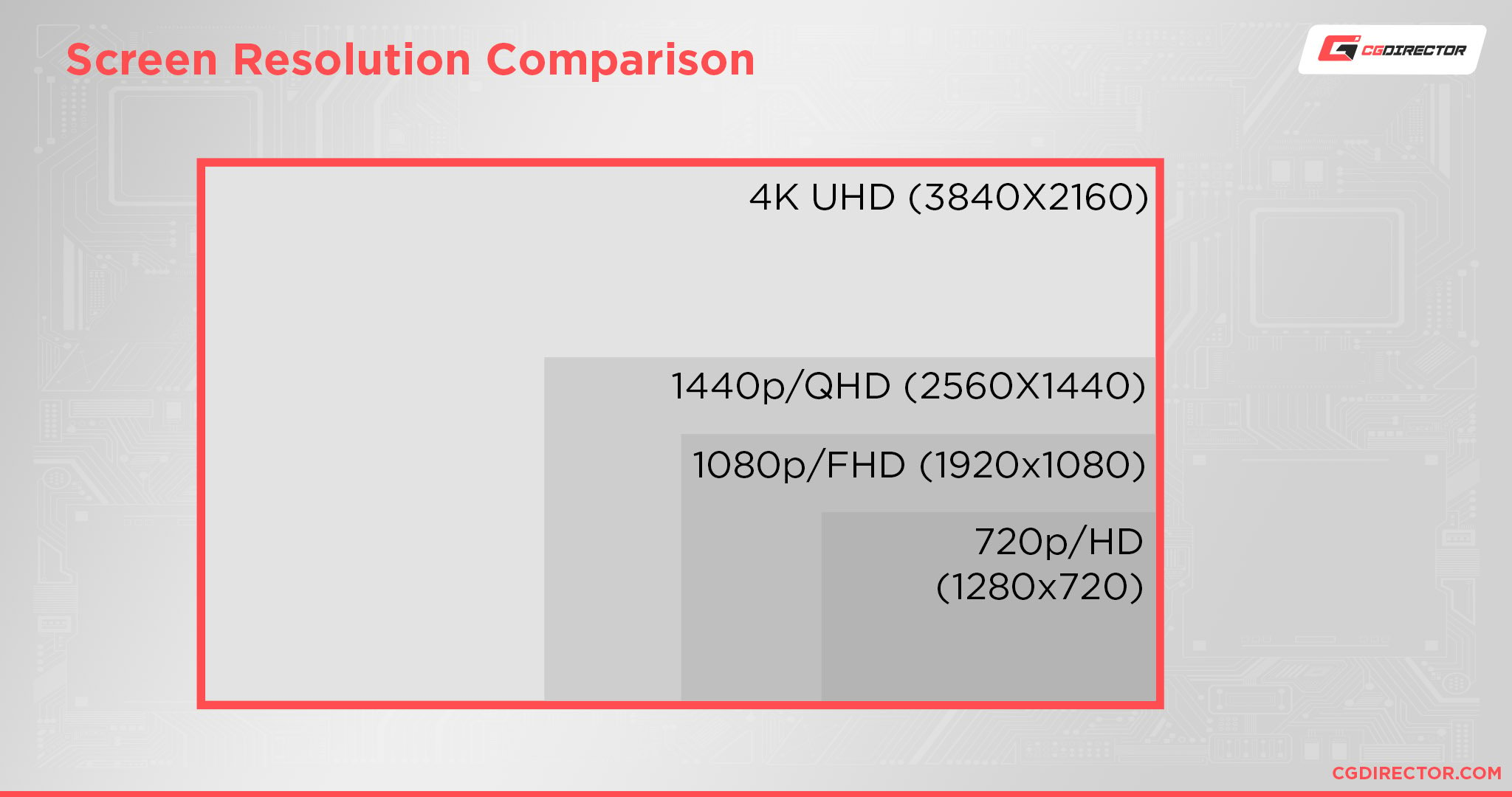
Your Footage, the editing timeline, and a lot of Menus, UI & Effects Panels that help in your editing process, Reference Images, and Sound editing controls, all need to be accessible at first glance.
Anything below a 2K resolution will not let you display all of these on-screen.
4K, of course, will give you a lot more room for your User Interface, but beware that all your Menu fonts and icons will get a lot smaller too, sometimes so small, they strain your eyes and exhaust you a lot faster than working on a 2K Screen.
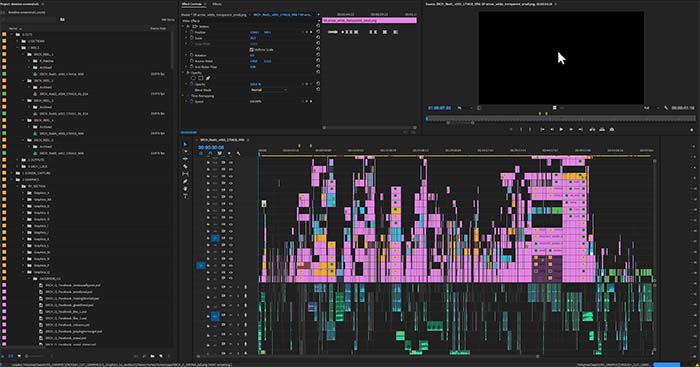
A complex Premiere Pro Editing Timeline
Microsoft Windows does have a feature called “Display Scaling” that lets you scale up small fonts on high-resolution Displays.
This, though, has to be supported by your Video Editing Application of choice as well and doesn’t always work properly with every 3rd-party Software.
Audio
Let’s face it: Sound on Laptops will never be satisfactory. Especially the lower-end of the audio spectrum lacks a lot of “uuhmpf”, and this comes at a reason.
Because low-end frequencies need a large speaker-membrane to be generated in high quality, due to size constraints, you just can’t fit large enough speakers or a large enough resonance area into a Laptop.
The only way to do professional audio-editing and -listening on a Laptop is with Headphones or in-ears, that are close enough to your ear to get away with producing even low-frequency sound at a very low volume.

Of course, it would be nice to show a version of an edited video to a client or colleague, directly on the Laptop with Sound, but without external speakers, this will be a sub-optimal experience with almost any Laptop.
A headphone jack should belong to the standard repertoire of any Laptop for Video Editing.
Performance
Mobility and Multimedia capabilities are important, but what it really comes down to at the end of the day, is raw Video Editing Performance.
Let’s take a look at some of the key Hardware Components that play a major role in speeding up your Video Editing workloads:
Processor (CPU)
The CPU is the single most important Hardware component in Video Editing.
Although many CPU Manufacturers advertise the Number of CPU-Cores much more than the CPU-Clock-Speed, Video Editing benefits more from a CPU that clocks high compared to a CPU that has a lot of Cores.
For Video Editing on a Laptop, up until recently, Intel has been in the lead with their CPU offerings.
As you can see in the table below though, AMD has been able to overtake Intel in multi-core performance with their newest Mobile Ryzen 4xxx Series CPUs.

Currently, you will still find much more offerings for Laptops with Intel CPUs, as Intel has been leading for so long, but I recommend going with a Ryzen 4xxx Series CPU Laptop if you can find one that fits your needs.
For high-end Video Editing, look out for Laptops with AMD Ryzen 9 6900HS (6900HX) or 5900H CPUs or Intel i9 12900H(K) CPUs.
For mid-range Video Editing or if your budget does not allow for quite so high-end components, you will be able to edit excellently on an AMD Ryzen 5600H CPU or on Intel 12700H, 12500H CPUs.
The “H” in those CPU-SKUs tells us they are allowed to draw around 35-50W of power.
There are “U” CPUs too, which only draw around 15W of power, but as you can guess, these will perform worse than their “H”-labeled bigger brothers.
Drawing less power means less performance, but it also means they produce less heat, don’t need big cooling solutions, and can be built into smaller / slimmer laptops. U-CPUs are therefore often found in Ultrabooks that are slim and lightweight.
Here is a Multi-Processing ranking for Laptop CPUs (Taken with the benchmark Cinebench R15 – higher is better):
| CPU Name | Cores | GHz | Cinebench R15 Multi |
|---|---|---|---|
| AMD Ryzen 9 5980HX | 8 | 3.3 | 2200 |
| AMD Ryzen 9 5900HX | 8 | 3.3 | 2190 |
| AMD Ryzen 7 5800H | 8 | 3.2 | 2164 |
| AMD Ryzen 9 5980HS | 8 | 3.0 | 2154 |
| AMD Ryzen 9 4900H | 8 | 3.3 | 1937 |
| AMD Ryzen 9 4900HS | 8 | 3.0 | 1918 |
| AMD Ryzen 7 4800H | 8 | 2.9 | 1820 |
| Intel Core i9-10980HK | 8 | 2.4 | 1800 |
| Intel Core i9-9980HK | 8 | 2.4 | 1740 |
| Intel Core i7-10875H | 8 | 2.3 | 1716 |
| Intel Core i9-9880H | 8 | 2.3 | 1650 |
| AMD Ryzen 5 5600HS | 6 | 3.3 | 1598 |
| AMD Ryzen 5 4600H | 6 | 3.0 | 1570 |
| Intel Core i7-10750H | 8 | 2.6 | 1431 |
| AMD Ryzen 9 4900U | 8 | 2.0 | 1384 |
| AMD Ryzen 7 4800U | 8 | 1.8 | 1302 |
| Intel Core i9-8950HK | 6 | 2.9 | 1269 |
| AMD Ryzen 5 4700U | 8 | 2.0 | 1170 |
| Intel Core i7-9750H | 6 | 2.6 | 1152 |
| Intel Core i7-10710U | 6 | 1.1 | 1080 |
| Intel Core i7-8750H | 6 | 2.2 | 1063 |
| Intel Core i7-8850H | 6 | 2.6 | 1023 |
| Intel Core i5-10300H | 4 | 2.5 | 920 |
| AMD Ryzen 5 4500U | 6 | 2.3 | 830 |
| Intel Core i5-8400H | 4 | 2.5 | 819 |
| Intel Core i5-8300H | 4 | 2.3 | 795 |
| Intel Core i7-7820HK | 4 | 2.9 | 784 |
| Intel Core i7-10510U | 4 | 1.8 | 758 |
| AMD Ryzen 7 3700U | 4 | 2.3 | 701 |
| AMD Ryzen 7 3750H | 4 | 2.3 | 789 |
| Intel Core i7-6820HK | 4 | 2.7 | 694 |
| AMD Ryzen 7 2700U | 4 | 2.2 | 662 |
| AMD Ryzen 5 3500U | 4 | 2.1 | 620 |
| AMD Ryzen 5 2500U | 4 | 2.0 | 584 |
| Intel Core i5-10210U | 4 | 1.6 | 567 |
| Intel Core i9-11980HK | 8 | 2.6 | 2109 |
| Intel Core i9-11900H | 8 | 2.5 | 2184 |
| Intel Core i7-11800H | 8 | 2.3 | 1999 |
| Intel Core i7-11375H | 4 | 3.3 | 929 |
| Intel Core i9-12900H | 14 | 1.8 | 2639 |
| AMD Ryzen 9 6900HS | 8 | 3.0 | 2276 |
| Intel Core i7-12700H | 14 | 2.3 | 2206 |
| CPU Name | Cores | GHz | Cinebench R15 Multi |
Graphics Card (GPU)
Although Video Editing would seem to be a very visually demanding task, the Graphics Card is actually not utilized as strongly as one would think.
Sure, there are some specialized things that a good GPU can speed up (such as de-noising or time-remapping), but most of the heavy lifting is done by the CPU.
Decoding Footage and Effects Calculation is mainly a CPU’s job, while the Graphics Card very seldom gets to do tasks more demanding than displaying Program Interface and Footage to the inbuilt Laptop Screen or external Monitors.
There are other Tasks such as 3D GPU Rendering or Gaming, that are much more demanding on the GPU.
For Video Editing, a solid mid-tier GPU will deliver very similar performance to a high-end GPU, at a better overall value. See the following Benchmarks:
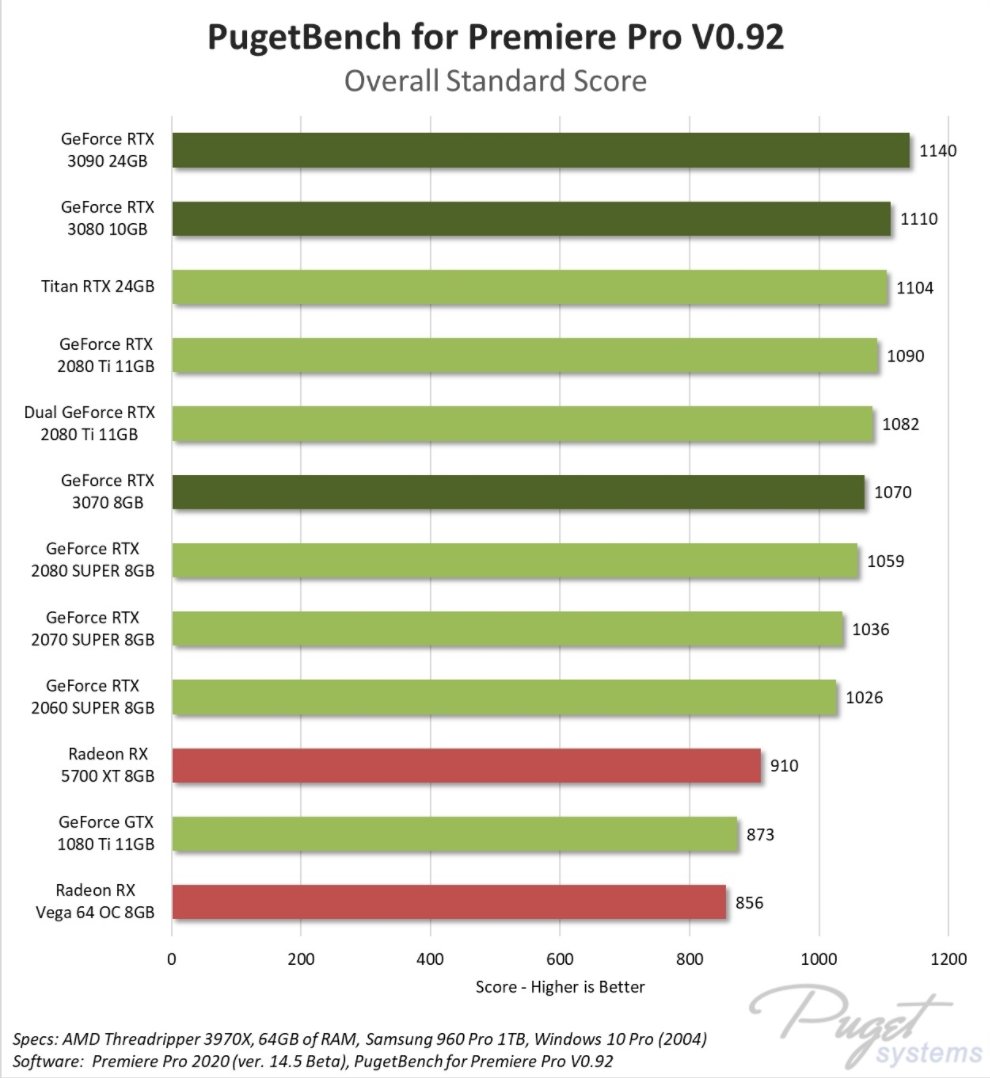
Image-Credit: Pugetsystems
I recommend starting with at least an Nvidia GTX 1660 Ti for Laptop-Buyers with a smaller budget, and going with an Nvidia RTX 3060 or even an Nvidia RTX 3070 for those who have some more money to spend.
There are some Encoding processes that are accelerated through Nvidia GPUs that have CUDA cores. H.264 encoding is one of the more important ones that you might use throughout the day.
Although AMD has some strong GPUs as well, they tend to perform worse than Nvidia’s offerings when it comes to Video Editing as can be gleaned from the chart above.
Memory (RAM)
Video-Editing is a workload that can fill up your System Memory with ease.
Smooth, lag-free, real-time Editing is the ultimate goal, and this can only be achieved when most of your footage and applied Effects can be cached into your System’s Memory.
The higher your Footage and Project Resolutions are, the more RAM you will need for a smooth Video Editing experience. But how much Ram do you really need for Video Editing?
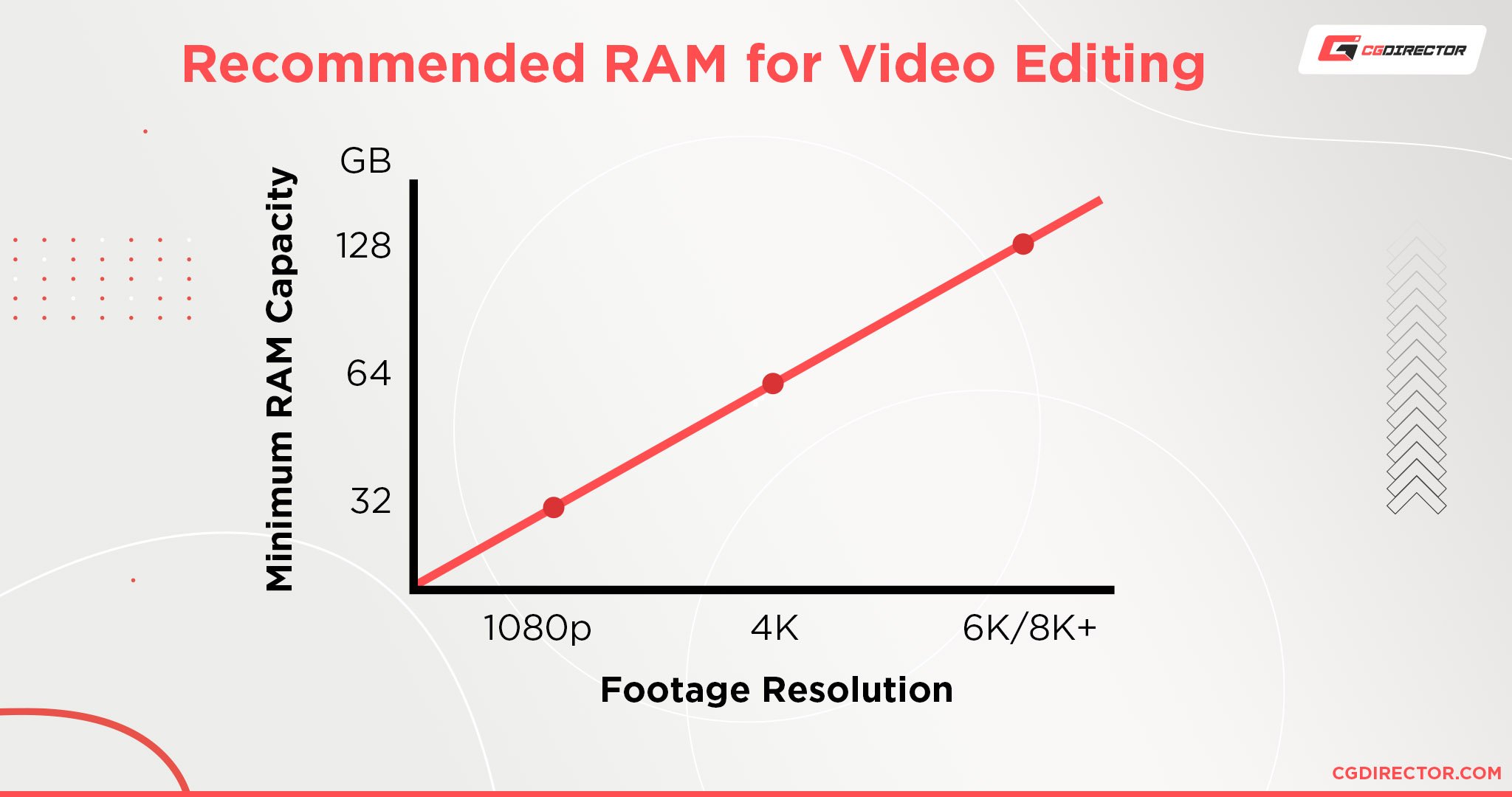
A good baseline for 2K Editing on shorter Projects is 16GB of RAM.
That said, though, you will be much happier with having 32GB of Ram in your Video Editing Laptop, especially when your Project Resolutions get higher, you use more Effects, or edit on a lot more RAW, 10bit, or uncompressed Footage that might also result in longer Project-Timelines.
If you have extremely complex Projects, you won’t get around building a Video Editing PC that supports even more than 32GB of RAM.
Adobe Premiere and other Video Editing Solutions will take it all if it’s available even though their official system requirements might not call for it.
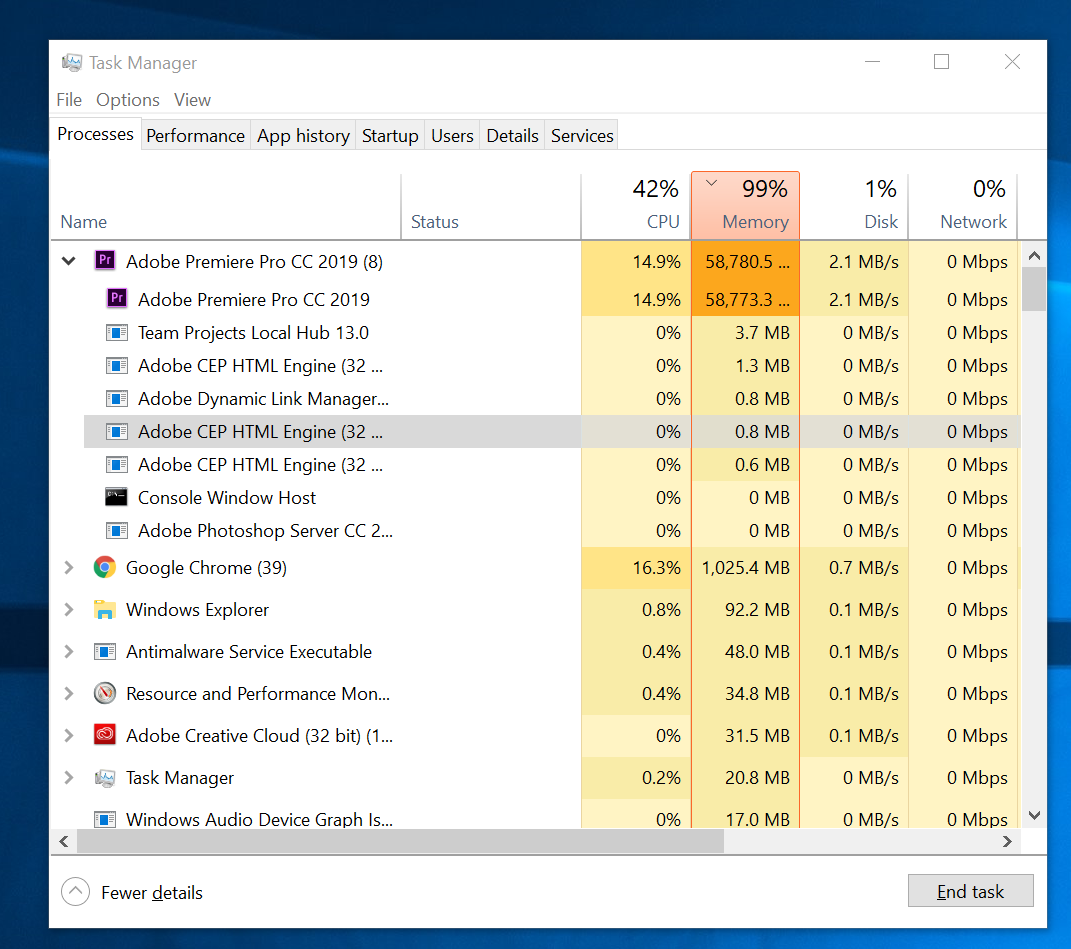
Windows 10 Task Manager showing Premiere Pro RAM utilization
Storage
There are three Storage types that are being used in Desktop PCs and Laptops nowadays:
- The good old mechanical (SATA) HDD (Hard-Disc-Drive)
- The (SATA) SSD (Solid State Disc)
- The (M.2) NVMe SSD (Non-Volatile Memory Express SSD)
Each of these Storage devices has some pros and cons that you should be aware of before choosing your new Laptop for Video Editing.
The HDD
The Hard Disc Drive is the currently cheapest Storage Type when we measure the cost per Terabyte. A Terabyte of HDD Space currently only costs around 22$.
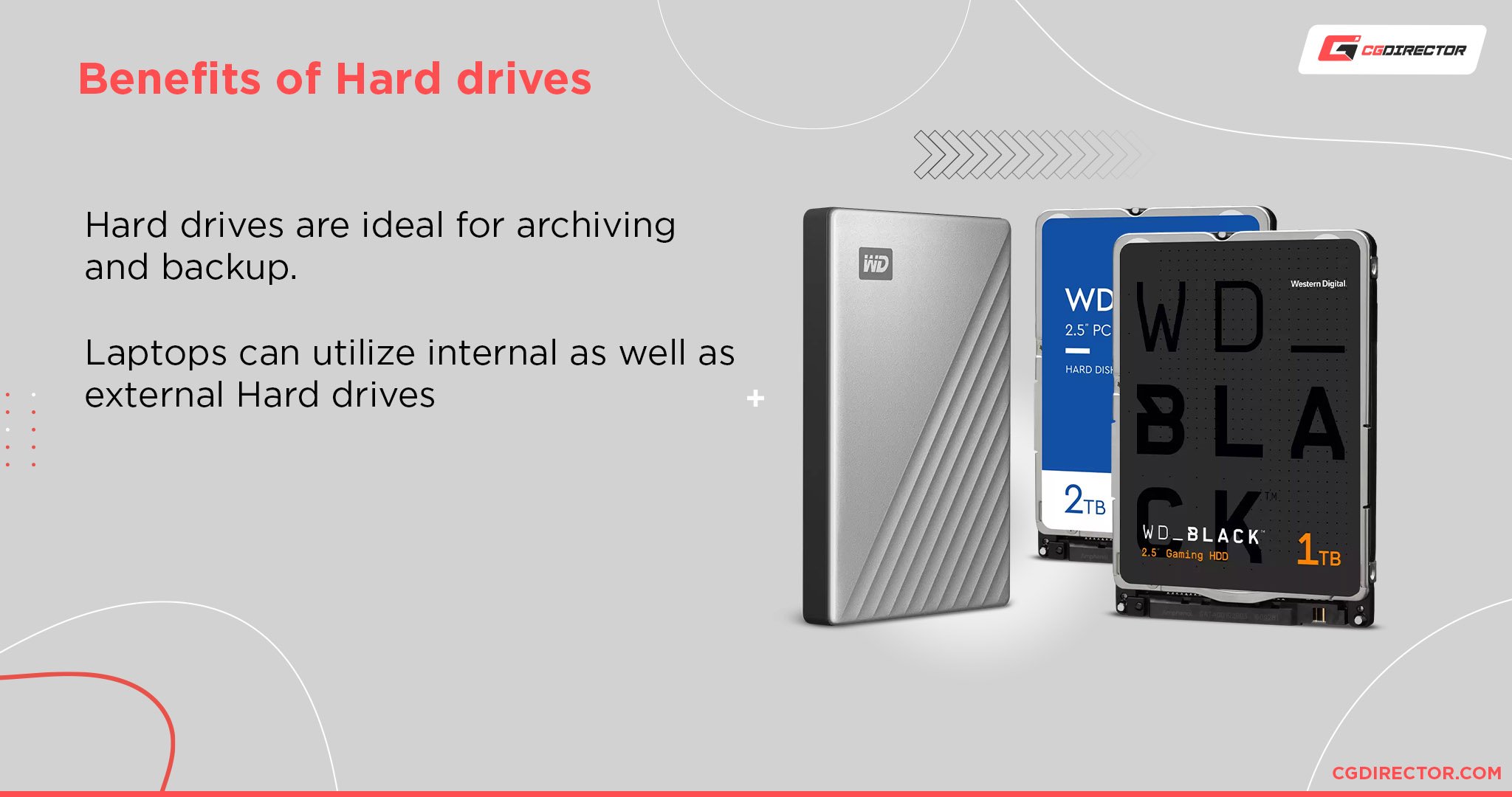
As cheap as an HDD is, it unfortunately also is slow in reading and writing data to and from the disk. Typical Speeds of sequential reading and writing are around 100 Mbyte/s (A bit higher on Desktop’s 3,5″ HDDs).
HDDs are best used for Backups and Footage- or Project-Archiving of Projects that are not actively being worked on.
The (SATA) SSD
Solid State Disks come in at around 100$ / Terabyte. They are 5 times as expensive as HDDs, but also 5 times as fast.
A typical SATA SSD can read and write at about 500MByte/s sequentially.
An SSD is usually great for having your Operating System and Software run on.
The (M.2) NVMe SSD
This type of Storage Device is very similar to the SATA SSD in terms of its inner workings.
It is priced at around 200$ / Terabyte but has speeds that are up to 6 times faster than even those of a SATA SSD. (30 times faster than an HDD!)
This type of Storage should optimally be used for your Project Files and Footage, as it is blazingly fast for real-time reading of your Footage.
Ideally, a Laptop for Video Editing will have at least two of the above-listed Storage Devices. A large HDD for longer-term storage and archiving and either a smaller SSD or smaller NVMe SSD for active projects.
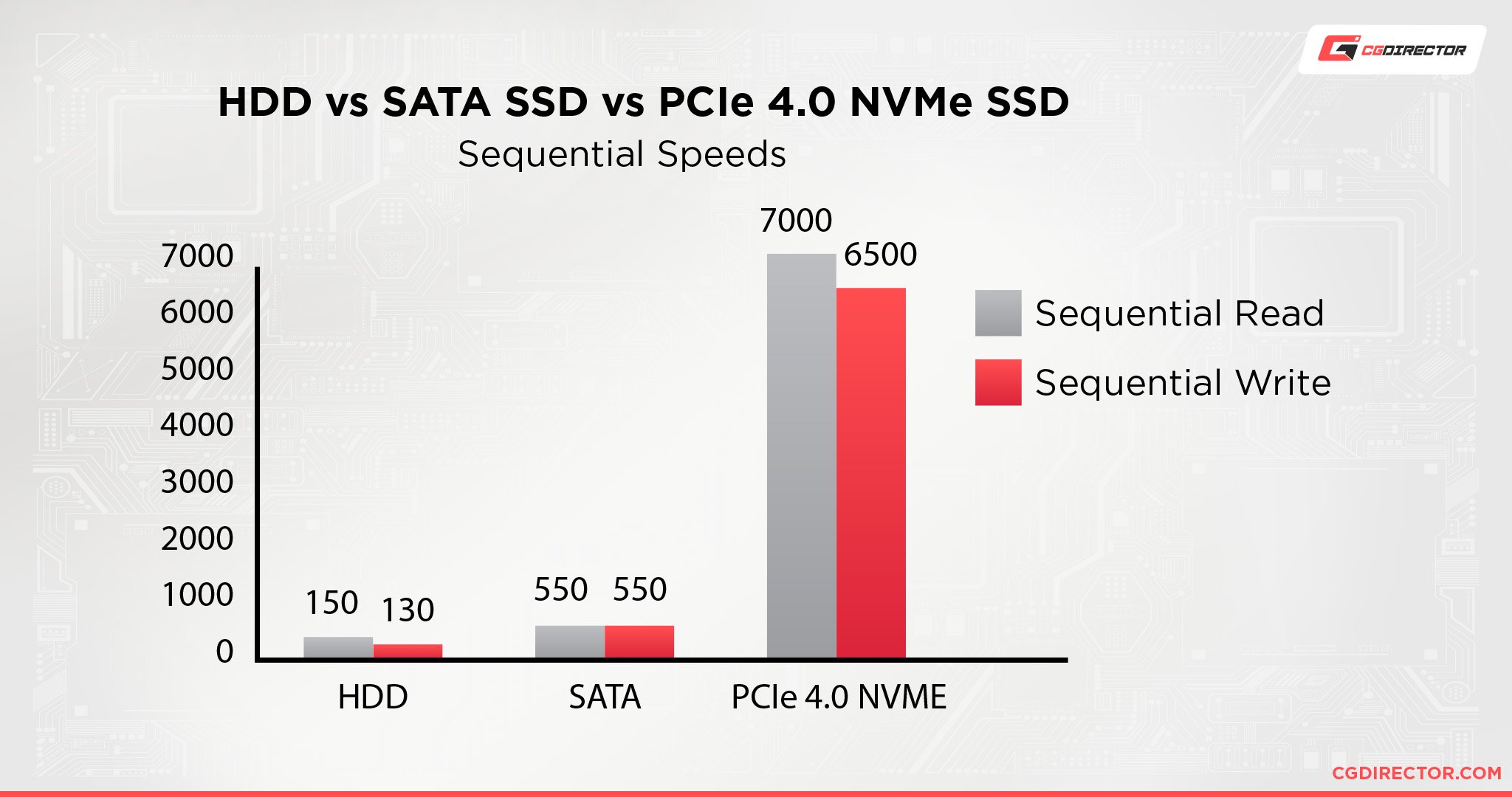
External Connectors
An ideal Laptop for Video Editing should be able to drive some external Devices that you either carry with you or have waiting for you at your typical work-areas.
This can include a Keyboard, Mouse and external Monitor, a Tablet, and external Speakers. An external Hard-Drive and Headset or Headphones are two more Devices that almost anyone will rely on while editing.
At a minimum, therefore, your Video Editing Laptop should have 3 to 4 USB connectors, either a Display Port or HDMI Plug, and a Headphone Jack for Line Out and Mic in.
Why does it say “Gaming Laptop” everywhere I look? I want to do some serious work!
Many Laptops have the word “Gaming” in their product title. This doesn’t mean you can only game on it.
The gaming audience just happens to be so big that manufacturers like to target them with their keywords. This is why most marketing is oriented at Gamers.
Laptops that can be gamed on, though, can also very well be worked on, with Video Editing being one of the many things you can do excellently on “Gaming Laptops”. They consist of the same internal parts.
Laptop Recommendations
In this article I purposely focused on giving you the insight to pick the right Laptop specifications for Video Editing on your own, that way you are always up-to-date without having to rely on recommendations that might be outdated.
Nonetheless, this Article wouldn’t be complete without some concrete Laptop recommendations for Video Editing.
Because we’ve been critically reviewing Laptops for a few years now and know how fast the Laptop landscape can change, we’ve created the below 3-step recommendation tool that’ll show up-to-date recommendations depending on the budget you select.
Give it a try!
Select “Laptop“, set your budget and click “Show Laptops“.
FAQ
What Laptop do YouTubers use to edit?
There’s no one Laptop that all or even most YouTubers use to edit their videos. There are many that would fit the requirements of your average YouTuber.
If you’re a YouTuber and looking to edit Videos, the best Laptop for you is one that both performs well enough and one that is easy to handle, keeping your efficiency and motivation up. This can be a MacBook or a Laptop and you should make sure the laptop has at least 4 CPU Cores, a dedicated GPU, and at least 16 GB of RAM.
Are Macbooks good for Video Editing?
Yes, Macbooks are good for Video Editing. They perform similarly to Laptops but generally come at a higher price point when you compare performance /per dollar.
Some say a Macbook is easier to use, thanks to Apple’s ecosystem, intuitive operating system, and user interface, in my opinion, this comes down to personal preference.
How much RAM do you need to edit 4K Videos?
You can edit short Video Projects (under 1min) that aren’t too heavily filled with effects or complex RAW footage on 16GB of RAM. If your editing project’s timeline is longer and you want to hold more of the project in cache for real-time previewing, you should consider upgrading to at least 32GB of RAM.
Which Laptop brand is best for video editing?
Some of the top Laptop Brands that also offer great Video Editing Laptops are:
- Dell (XPS)
- Lenovo (Legion)
- Acer (ConceptD)
- MSI (Creator)
- Asus (ProArt)
- Apple (Macbook Air, Pro)
What is better for Video Editing: Ryzen or Intel Core?
Currently, Intel is back in the lead, outperforming AMD in single-core CPU performance and offering superior Processors for Video Editing. Intel’s current generation of CPUs does draw more power, though, so while you get more performance, you may have a shorter battery lifespan when choosing an Intel CPU.
Over to you
That’s about it! What kind of Laptop are you thinking of buying? Feel free to ask for help in the comments and our expert forum.
![How to pick a Laptop For Video Editing [2024 Guide] How to pick a Laptop For Video Editing [2024 Guide]](https://www.cgdirector.com/wp-content/uploads/media/2019/04/Best_Laptop_for_Video_Editing_Twitter-1200x675-1200x675.jpg)
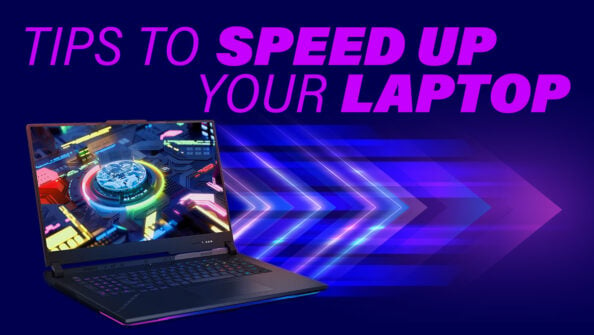
![Laptop Displays — Panel Types compared [IPS/OLED/TN] Laptop Displays — Panel Types compared [IPS/OLED/TN]](https://www.cgdirector.com/wp-content/uploads/media/2024/03/Laptop-Displays-—-Which-Panel-Technology-Should-You-Go-With-Twitter-594x335.jpg)
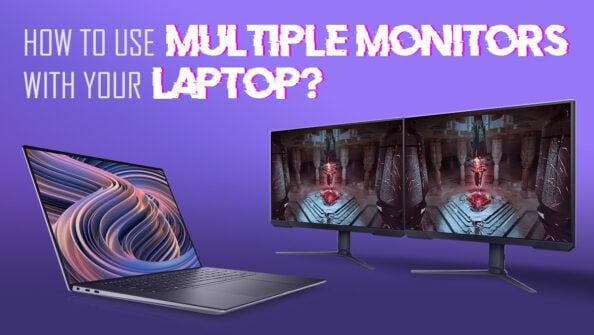
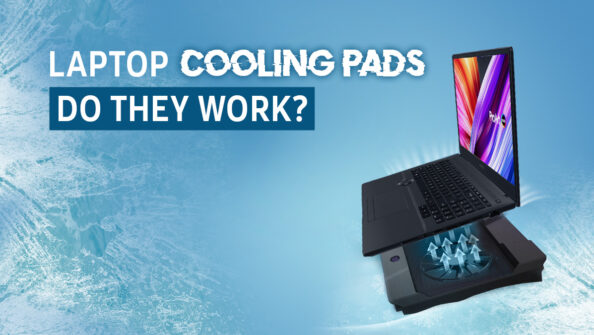

58 Comments
11 July, 2022
Hi such interesting article, Thanks for leavin it on the web, I am wondering what do think of the Intel IRIS Xe graphics for video editing, I am looking at the 17″ HP Envy for a replacement of my current laptop.
14 July, 2022
Intel’s Iris Xe Graphics are quite limited in performance. They can’t keep up with AMD’s iGPU solutions and aren’t comparable with most of Nvidia’s discreet GPUs that you can find in Laptops.
It’ll depend on the software you’re using and project complexity, but I’d steer clear of current-gen Iris Xe for serious work.
Cheers,
Alex